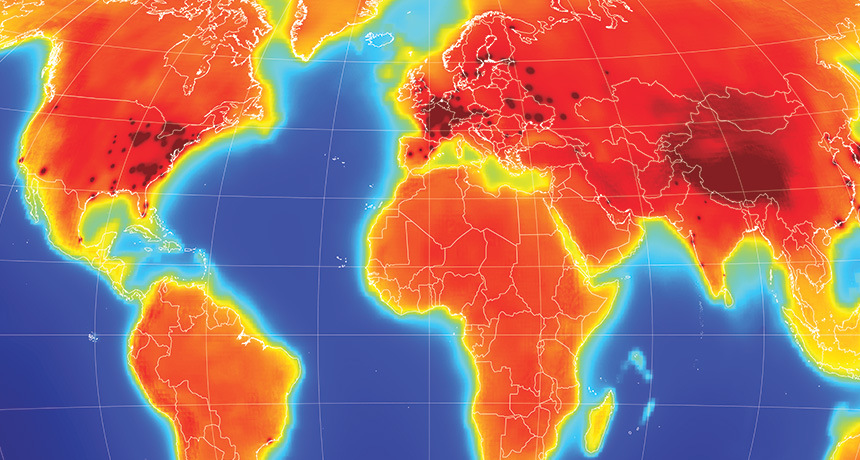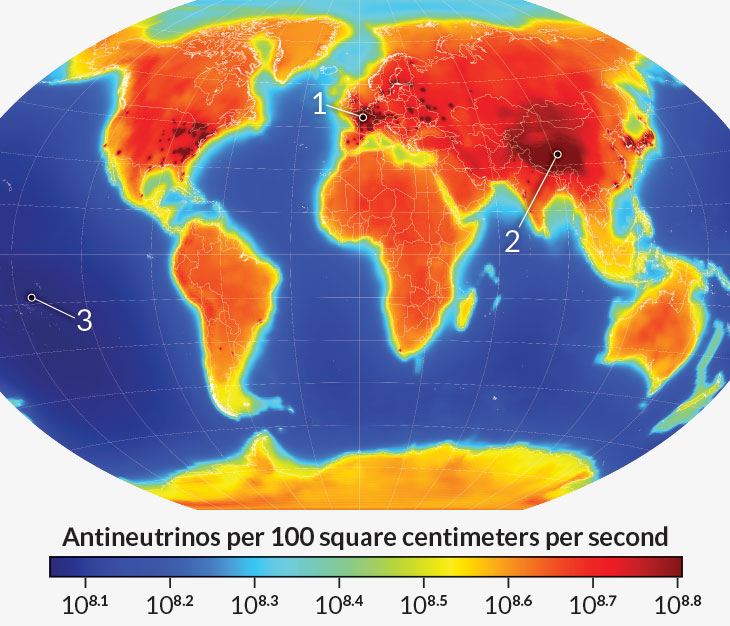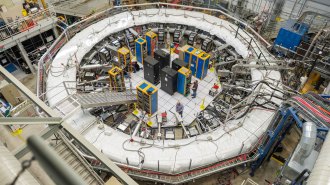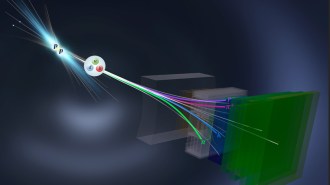Map captures Earth’s antineutrino glow
Planet’s crust, nuclear reactors are hot spots in newly released image

ANTINEUTRINO RAINBOW A global map of antineutrino emissions illustrates that many of the wispy particles are released from Earth’s crust and nuclear reactors.
S.M. Usman, G.R. Jocher, S.T. Dye, W.F. McDonough, J.G. Learned, Adapted By S. Egts








